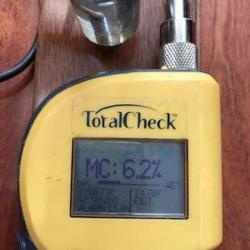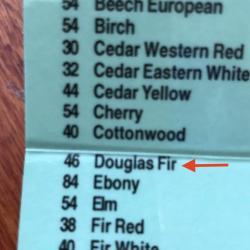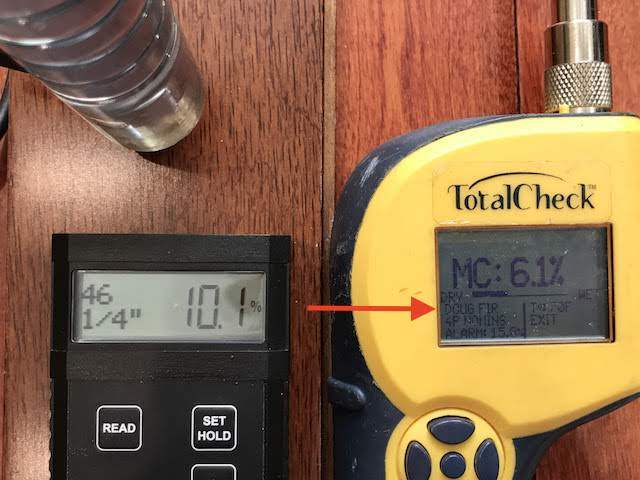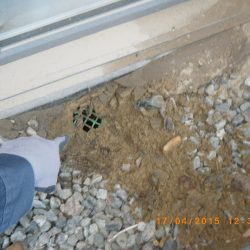CFIU is proud to announce Steve Lopes has successfully completed CFIU Certified Carpet Inspector Certification. Steve will be serving Delaware, Northeast Maryland, Southeast Pennsylvania, and Southern New Jersey.
Steve can be reached at 908-482-5616

by linda
CFIU is proud to announce Steve Lopes has successfully completed CFIU Certified Carpet Inspector Certification. Steve will be serving Delaware, Northeast Maryland, Southeast Pennsylvania, and Southern New Jersey.
Steve can be reached at 908-482-5616

by linda
Congratulations Ron Ellsworth, Golden Colorado for completing Certified Flooring Inspectors Advanced Glass Tile Course.

by linda
Looking to get certified as a Carpet-Flooring Inspector? Check out the details on this page: Get Certified

You found the perfect house. It looks clean, and well maintained, and it’s just what you were looking for. But before you move in, you should know if the carpet is contaminated with pet urine, mold, or moisture. If you’re purchasing a previously owned home, don’t take any chances with your family’s health— hire a Certified Carpet inspector to identify potential carpet problems.
Not all urine will show up as a visible stain, since the carpet may have been spot cleaned or professionally cleaned. Urine provides an environment for mold to grow and bacteria to flourish.
You may think the carpet looked fine when you visited the house, but did you know that odors can be cleverly disguised with air fresheners, potpourri, baking cookies, or burning candles? Professional or DIY Carpet Cleaning may remove some of the odor and topical discolorations, but won’t remove pet urine from the carpet’s backing, pad, and subfloor.
The real problem is, that once a carpet is contaminated with pet urine, the odor will return and linger long after the seller is gone and the cost of replacement will be up to you. Urine residue contains salt crystals that draw moisture from the air, especially when humidity is high. These crystals gas off, resulting in unpleasant urine odors in the home.
Since carpet and flooring inspections are a specialty field, a home inspector will only include obvious problems like large stains, holes, or tears in their report. The only way a prospective home buyer will know if the carpet in the house they’re buying or renting is safe for their babies and young children to lay and play on is by having the carpet inspected by a professional Certified Carpet Inspector.

A Certified Carpet Inspector will inspect for:
Certified Flooring Inspectors University:
Ricky Bunker 843-222-1029
Linda Lockwood 609-660-1717
by linda
| Looking to get certified as a Carpet-Flooring Inspector? Check out the details on this page: Get Certified
When inspecting a hardwood floor for gaps, discoloration, cupping or buckling, accurate moisture readings are needed, so it’s important that wood flooring inspectors (and installers) know how to test their meters to ensure they’re getting accurate readings. Since most hardwood flooring problems are related to moisture issues, accurate invasive (pin), moisture readings are needed to determine the cause of the complaint. Invasive moisture testing is especially important for determining the cause of gaps between wood strips or planks and in cupping claims for determining the moisture difference from the top to the bottom of the boards. Since we can only put so many pinholes in a wood floor without upsetting the consumer, we often rely on non-invasive moisture meters. Non-invasive meters are the perfect choice for moisture testing, provided the meter is providing accurate moisture readings that are comparable to a properly functioning invasive (pin) meter. The most accurate non-invasive meters for wood flooring should have species and depths settings, which narrows the choice to dual-depth Ligno-Scanners SD or SDM. Due to their versatility, Ligno-Scanners are the most popular non-invasive meters used by Certified Wood Flooring Inspectors. Non-invasive meters without depth settings are best suited for finding wet “hot spots” and for comparing moisture between affected and non-affected areas. These meters won’t provide moisture readings comparable to a pin meter because they’re reading the wood floor and subfloor moisture between 3/4″ to 1-1/4″ depths. Calibration blocks are available for most moisture meters. If you don’t own a calibration block, the steps below will help you determine if your moisture meter is functioning properly during an inspection. Your meters can be tested by oven drying wood, or with a piece of solid wood maintained in an environment you know has been stable (your office or home) by following steps 3-7 below. NOTE: Scan and pin meters can produce erroneous readings even if they are brand new or were recently calibrated by the manufacturer. To confirm your invasive and non-invasive meters are providing accurate measurements follow the steps below. |
1- Calibration check for Pin or Scan Meter
| Delmhorst MCS-1 Calibration Test Block ($40.00) | Readings should match the appropriate scale on the back of the block |
|
 |
 |
|
| Ligno Scan Meter Calibration Block ($63.00) | Tramex MRH 111 Calibration Check Box ($77.00) |
|
 |
 |
| 2- This Delmhorst TotalCheck moisture meter is calibrated: |
||
| Calibration Readings 12% | Calibration Readings 22% | |
 |
 |
|
| 3- Measure Temperature and Humidity at floor level (away from exterior doors and walls) |
||
 |
||
| 4- Calculate EMC using the current Temperature and Humidity | ||
 |
||
| 5- If the environment has been consistent with the current Rh/Temp, according to EMC, the wood’s moisture content should be around 6.4%. (Keep in mind, the wood’s moisture content will vary slightly from board to board, and on different areas of a single board.) |
| 6- Using a Delmhorst TotalCheck set on Doug Fir, MC of the plank below measured 6.0%-6.2% |
 |
7- Moisture readings of 6.0%-6.2% indicate:
Delmhorst meter set on Douglas Fir
&
Ligno meter set on Douglas Fir @1/4″ depth
The Ligno is reading incorrectly in comparison to the Delmhorst and EMC
| Ligno SDM Chart: 46 Doug Fir | Ligno SDM set on Douglas Fir [46] is 4% off (more about this below) Delmhorst set on Douglas Fir is reading accurately |
 |
 |
| The Ligno read correctly when changed to the “0” (relative setting) @ 1/4″.
This is what we’re looking for! |
 |
| 9- The following shows accurate Tramex Pin moisture readings and comparable Ligno SDM readings- This is what we’re looking for! Close moisture readings that are consistent with EMC= Accurate and justifiable moisture tests.
|
|
 |
Tramex: 9.3%
Ligno SDM: 9.4%
|
| Lesson Learned |
|
.
Learn More Online at Certified Flooring Inspectors University

by linda
Looking to get certified as a Carpet-Flooring Inspector? Check out the details on this page: Get Certified
ertified Flooring Inspectors University [CFIU] provides training for flooring inspectors and flooring professionals.
Our training includes methods for test cleaning floor products. We recommend Isopropyl Alcohol (IPA) for cleaning tests on wood, laminate, and luxury vinyl flooring because it dries quickly, it’s readily available, safe to use, and it’s an effective solvent.
Recently, we have seen a new issue with spots and streaks on wood flooring that required a specific strength of IPA for accurate test results. Read more about this below…..
ISOPROPYL ALCOHOL [IPA]
Alcohol is sold in many forms: isopropyl, methyl, wood, ethyl, and denatured alcohol. For the purpose of this article, we’ll be discussing Isopropyl and Denatured Alcohol.
Isopropyl alcohol is also known as isopropanol or IPA. Pure isopropyl alcohol does not contain denaturants. The percentage marked on the bottle represents the percentage of pure alcohol, i.e. 50% bottle contains 50% pure alcohol and 50% water. The lower the alcohol percentage the higher the water content. Moisture evaporation [drying time] takes longer at lower percentages.
DENATURED ALCOHOL
Denatured Alcohol is commonly used for cleaning, degreasing, and fueling camping stoves. Denatured alcohol is not available in Canada. Denaturants are added to discourage human consumption. The amount and percentage of the ingredients vary according to the manufacturer and most MSDS Safety Sheets don’t list the exact percentages. For instance, Klean Strip Denatured Alcohol contains 30-50% Ethyl alcohol and 40-60% Methanol (wood alcohol). Denatured Alcohol is safe to use, and may be used if 70% and 91% IPA fail to provide good results. However, the strong odor of denatured alcohol may be objectionable to the consumer. Denatured Alcohol Safety Warnings:
SPOTS ON WOOD FLOORING

A new 3/4″ factory finished, random length, solid wood flooring was installed nail-down, over wood subfloors. No adhesive was used in the installation. The wood flooring exhibited spots and streaks in random areas throughout the house and the spots/streaks were noticed immediately after installation. The contractor thought the spots were topical and would just clean off. However, after three months of cleaning, the spots did not change or improve using the manufacturer’s recommended cleaning procedures.
When it became evident that the spots were not coming off, a complaint was filed with the retailer. The homeowner believed the spots were in, or under the finish. The retailer hired an inspector believing there was an issue with the factory-applied finish.
Upon inspection, dull spots and streaks were observed throughout the house. The spots and streaks did not cross the joints from plank to plank indicating they were not caused by the homeowner.
The inspector attempted to clean multiple spots using a white cloth dampened with 70% IPA. The IPA removed a small amount of topical soil but did not remove, or improve the spots and streaks.
Planks removed from a sealed carton were inspected and found to have spots and streaks similar to those found on the installed floor. 70% IPA was used on these spots but they could not be removed.
One plank (from the closed carton) with a spot/streak was taken by the inspector for further cleaning tests. The spot was completely removed using a white towel dampened with 91% IPA.
To be sure 91% IPA would remove the spots on the installed floor, the retailer returned to the customer’s house to clean more planks. The results were the same, the spots/streaks that could not be removed with 70% IPA were easily removed with 91% IPA.
Since the planks were coming out of the box with similar spots and streaks it was determined they occurred at the factory. Because this was a random-length product, the flooring was likely boxed by hand. It appears the spots were caused by contaminants on someone’s hands when the planks were being sorted and boxed.
LESSON LEARNED
We have learned that using lower strength alcohol (IPA) may cause negative results leading an inspector to believe spots and streaks are in, or under, the factory finish. If the proper products aren’t used when testing, the inspector’s findings could be wrong.
If the inspector’s findings are wrong, the manufacturer may be replacing a floor that could have been easily serviced.


RECOMMENDATIONS
BOTTLE STORAGE
To prevent bottles from leaking, place a piece of plastic wrap, or a sandwich bag over the bottle opening before screwing the cap on.

![]()
Certified Flooring Inspectors University:
Ricky Bunker 843-222-1029
Linda Lockwood 609-660-1717
by linda
This LVP was installed in the kitchen of a new house. Within 6 months of installation, the floor buckled between the sink and the refrigerator. The retailer ordered replacement material and the planks were replaced in the buckled area.

The installer couldn’t get the planks to fit correctly without gaps on the side and end joints so he covered the gaps with painters tape and notified the retailer. At that point, the retailer hired an inspector to determine the cause.
The inspector asked the homeowner if any attic stock was available and was directed to a couple of boxes in the garage. The homeowner didn’t know if the boxes contained the new or old planks.
Now the inspector had to determine which planks were old and which were new. Fortunately, it was obvious which planks were old because the black rubber backing on the old planks had a white dusty OSB outline, and the new planks had a brown rubber backing that was dust and dirt free.

The inspector connected old and new planks together on a flat surface and found the length, width, height, and backing thickness was identical, however, the tongue and groove configuration did not match up and could not be engaged.
Since the T&G could not be properly engaged, it left a gap measuring 1/32″ wide down the length and at the end of the planks.

The same Manufacturer, Pattern, and Color names were stamped on the cartons indicating the proper product was ordered for the repair. It was later confirmed that the manufacturer had recently changed the T&G configuration.
This floor was successfully repaired with the existing planks and available attic stock using a method called
Joining A and Z Profiles
This repair method is explained in CFI University’s Luxury Vinyl Online Course.

![]()
Certified Flooring Inspectors University:
Ricky Bunker 843-222-1029
Linda Lockwood 609-660-1717
by linda

Luxury Vinyl, engineered wood, solid wood, ceramic tile, laminate flooring, VCT, VET, and Carpet tile have specifications for subfloor flatness, and those specs must be honored to avoid failures.
Did you know a 10′ piece of string can save you hundreds or thousands of dollars? That’s right, bright pink or yellow Mason’s twine only costs about $7.00 per 250 ft. or 28 cents per 10′ section.
What does the string do? Checks floor flatness–nothing fancy, anyone can do it, but someone has to do it or be willing to pay the price later.
Why gamble?
Develop a plan for success. Test flatness, moisture, and subfloor quality before the day of installation or run the risk of failures and expensive repairs or replacements.
Just our .28 cents worth
![]()
Certified Flooring Inspectors University:
Ricky Bunker 843-222-1029
Linda Lockwood 609-660-1717
by linda
What is a Carpet Inspector?
Certified Carpet Inspectors are trained and certified to evaluate carpet problems including, but not limited to; manufacturing issues, installation complaints, poor or improper maintenance, insurance claims, and health concerns.
The Certified Carpet Inspectors Role:
The Carpet Inspector’s role is to investigate and determine the cause of the complaint by using a series of tests and procedures. Upon completion, the Carpet Inspector prepares an unbiased report based on observations, field tests, and lab tests as needed. The Carpet Inspectors report is submitted only to the commissioning party.
Why Hire your own Carpet Inspector:
Certified Flooring Inspectors University members provide unbiased, third-party findings to the party who commissions the inspection. The role of the Inspector changes according to the party they are hired by; however, their findings are always based on the facts obtained during the inspection and are impartial to all involved.
Certified Carpet and Flooring Expert Witnesses:
An expert witness is a witness, who by virtue of education, training, skill, or experience, is believed to have knowledge in a particular subject beyond that of the average person, sufficient that others may officially (and legally) rely upon the witness’s specialized opinion about an evidence or fact issue within the scope of their expertise, referred to as the expert opinion, as an assistant to the fact-finder.
CFI University offers online training for Flooring Expert Witnesses.
by linda

Solid Strand Bamboo flooring will shrink just like a hardwood floor when the indoor relative humidity drops below 35 percent during the heating season. Bamboo flooring manufacturers recommend maintaining humidity over 35% through the heating season. To increase indoor humidity a whole house humidifier is recommended— steam humidifiers tend to perform best.
When bamboo flooring is installed floating method the shrinkage is more prominent because the planks are connected to each other and the floor shrinks as a whole. Overall shrinkage may result in gaps along the walls, through doorways, at kitchen islands, or any object that stops the floor from moving.
Transition strips should be installed at doorways, and proper expansion space in the width and length direction must be provided. Your installer has to make sure nothing will stop the bamboo planks from contracting and expanding as one unit.
Without proper humidity levels, a 5.25” bamboo plank installed floating method in a 15’ room will shrink on average 1/64” per plank. The total shrinkage across the 15′ room equals 34/64”.
On occasion, solid strand bamboo floors may shrink excessively, and wider than normal gaps occur. When this happens the floor should be evaluated by a Certified Bamboo Flooring Inspector.
![]()
Certified Flooring Inspectors University:
Ricky Bunker 843-222-1029
Linda Lockwood 609-660-1717
by linda
 |
Stephen Lagueux St-Jules, QCCertified Flooring Inspector 418-389-4355 |
As a home inspector, I often come across floor troubles when I conduct my inspections. Floor problems can be the result of many factors and can often be related to an inadequate preparation/installation, inadequate indoor environment or other problems with the site itself such as the presence of excess moisture that comes from underneath the floor. Although my job is not to inspect the floor itself but the entire house as a whole, I will use the clues discovered with the troubled floor to help me with the rest of my inspection and the report.
Floors will tell a lot on the general condition of the house it is installed in. During a pre-purchase inspection, I’ve noticed a bad case of cupping with the floating floor of a bedroom located in the basement of the house. While the same floor was installed in the same manner in the entire basement, no other anomalies were found. Cupping occurs when one side of the board has a higher moisture content than the other side. The side with the higher humidity content will expand and create a concave form. |
The cupping was locally observed and was found to be underneath the bedroom window. This finding confirmed my hypothesis that there could be a water infiltration from what I had gathered earlier during the exterior inspection.
The house was just a few months old and more work was needed with the landscape. When outside, I noticed that the ground behind the house was sloping towards it. Signs of surface ground erosion and standing water were also noticeable. Those were the first signs that told me there could be something wrong with other systems or components of the house. The grading immediately around a house needs to slope away from it to avoid water accumulation around the foundations. Too much surface water seeping along the foundation wall will overcharge the perimeter drain around the footing, thus leading to possible infiltrations. While the primary role of the perimeter drain is to get rid of rising groundwater that could be pushing against the slab and finding its way in from underneath the walls and every other crack in the slab, the drain can easily be overwhelmed from the surface water. This is also why downspouts cannot be connected to the perimeter drain and must direct water away from the house.
The bedrooms windows in the basement were equipped with window wells. Upon inspection of the wells, I noticed that sand was leaking in from the sides in one of them. The drainage column was not properly installed nor protected from debris and a fairly good amount of sand could also be seen at the bottom of the column.
 Window wells are important components of the drainage system. They need to be properly anchored to the foundation and sealed to avoid infiltrations from the sides. Poor surface drainage and an inadequate window well installation make for the perfect combination for water infiltrations. Those telltale signs were confirmed when the cupping was later discovered.
Window wells are important components of the drainage system. They need to be properly anchored to the foundation and sealed to avoid infiltrations from the sides. Poor surface drainage and an inadequate window well installation make for the perfect combination for water infiltrations. Those telltale signs were confirmed when the cupping was later discovered.
The bedroom floor needed replacement. Proper grading of the soil was also needed along with a proper reinstallation of the window well and the drainage column. Verification and cleaning of the perimeter drain were also required. Those things are, of course, not to be expected in a brand new house but we never know. The source of a floor trouble can often be linked to another problem that comes from outside. Which was the case in this situation.
Sign in to your account
Lost password?